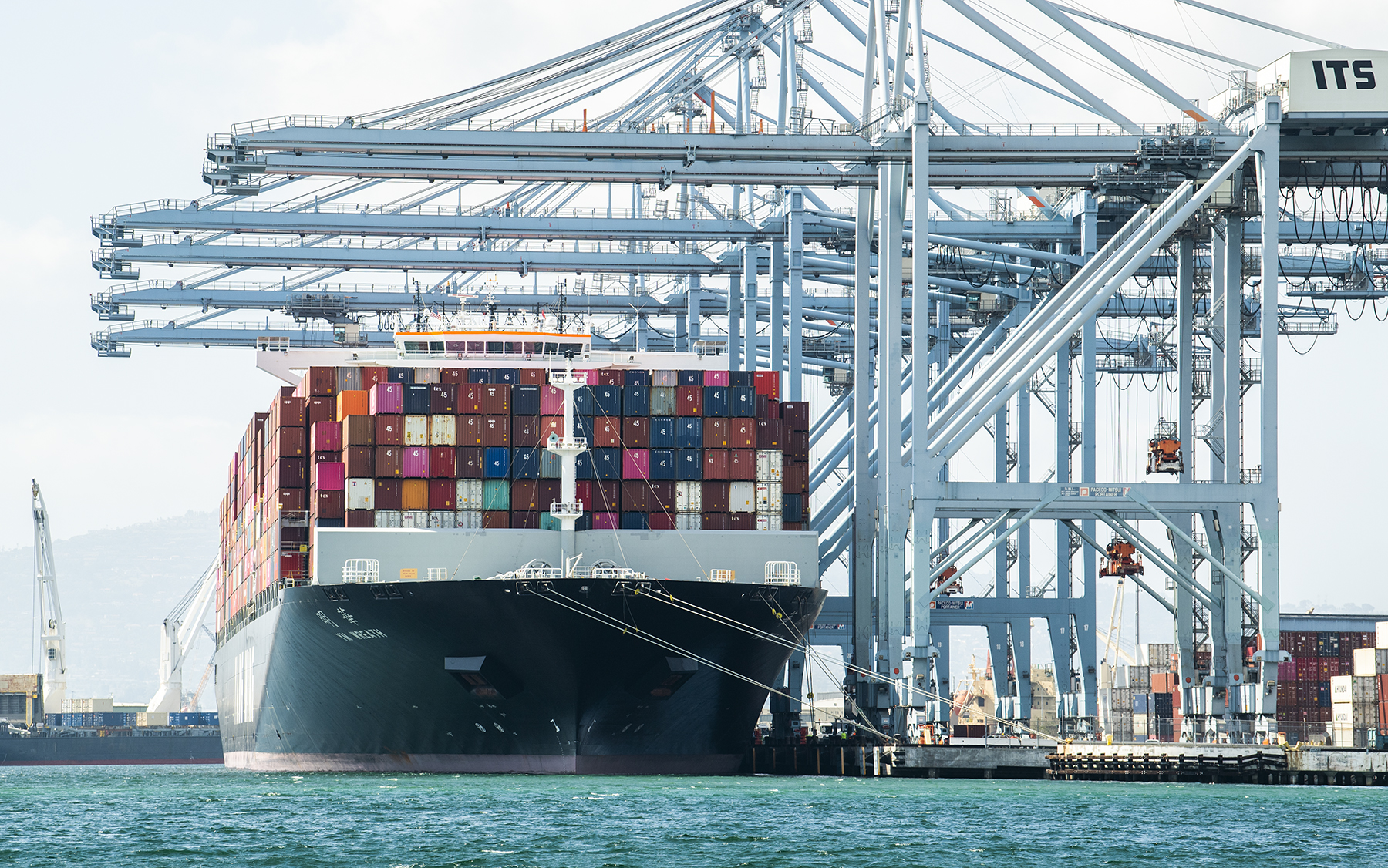
A coalition of more than a dozen California business and industry groups issued a statement Wednesday afternoon saying an executive order issued by Gov. Gavin Newsom earlier in the day did not “provide the sense of urgency” needed to address the ongoing supply chain crisis.
“While we support the governor’s response to this crisis, [the order] is a first of many steps in addressing the crisis unfolding at every level of the supply chain,” the statement reads. “There are additional real, tangible actions the governor could take to meet the moment and tackle this crisis head-on.”
One aspect of Newsom’s order the group homed in on was the California Department of Finance’s directive to work with state agencies to develop “longer-term solutions that support port operations and goods movement” for consideration in Newsom’s Jan. 10 budget. The coalition said holding potential solutions until January or later will not address the issues already overwhelming the ports.
Wednesday’s executive order also directed state agencies to identify state-owned properties and other locations for short-term storage and permits certain trade routes to be temporarily exempted from gross vehicle limit exemptions, allowing trucks to carry additional goods, according to the announcement. Newsom also called on state agencies to continue working with the Biden administration to address supply chain issues, a move the coalition directly called for in an Oct. 18 letter to the governor.
“California can take a unique national leadership role in partnering with the Biden administration, the ports and the many companies within the state engaged in goods movement to address this crisis,” the coalition stated. In the letter, the group laid out the following “comprehensive plan” to address supply chain bottlenecks:
- Declare a State of Emergency at the ports and the associated transportation links to enable quick action to resolve bottlenecks as they arise;
- Suspend implementation of AB 701, which regulates the use of quotas in warehouses, until the supply chain has normalized and goods movement has been restored;
- Suspend AB 5, which broadened which workers should be classified as employees rather than independent contractors, and allow independent truckers to operate in and through California until the supply chain has normalized;
- Provide flexibility on existing air resources and local port drayage truck regulations, and ensure upcoming deadlines on new regulations take into account delays in manufacturing and delivery of new trucks;
- Suspend implementation of the the South Coast Air Quality Management District’s Indirect Source Rule, which requires large warehouses to reduce some greenhouse gas emissions, until the supply chain has normalized;
- Suspend local and regional mandates that interfere or limit goods movement, including local prohibitions on unloading goods at stores after hours;
- Direct already appropriated state resources to clean up homeless encampments in and around goods movement corridors; and
- Expedite the CEQA and permitting processes, including conditional use permits, for warehouses, rail line and other critical components of goods movement.
“The suspension of these mandates will not undermine or diminish the state’s goals to reduce greenhouse gases and improve the environment in and around the ports,” the coalition claims in its letter. “If we do not immediately address the crisis in front of us, we will show the world that it is not possible to transition to cleaner technologies while allowing commerce and the economy to thrive. The inability to meet the moment and address the demand crisis we are facing would be a major setback in the fight for global emissions reductions.”
The Los Angeles-Long Beach area regularly ranks among the top cities for air pollution, due not in small part to the bustling San Pedro Bay ports complex—the busiest in the country, bringing in 40% of U.S. imports. Month after month, the ports have seen a backlog of ships anchored or adrift off the coast, waiting for their turn to unload. The cargo surge began in summer 2020 amid the pandemic and has brought record volumes through the complex.
Among the coalition members is the Los Angeles Area Chamber of Commerce but the Long Beach Area Chamber of Commerce is noticeably absent from the group.
“The Long Beach Chamber is one of our most important coalition partners on goods movement and every major business issue. Due to an unanticipated deadline for our submittal we were not able to finalize many of our coalition members,” California Business Roundtable President Rob Lapsley said in an email Thursday. “The Long Beach Chamber is officially helping to lead this goods movement coalition effort in addition to the participation of other coalition members. ”
In a phone call Thursday, Long Beach chamber President and CEO Jeremy Harris said fully supports the coalition and that the chamber will be included in future letters on the issue.
The coalition also includes: the California Business Roundtable; California Retailers Association; California Business Properties Association; California Asian Pacific Chamber of Commerce; Agricultural Council of California; California Grocers Association; California Trucking Association; California Manufacturers & Technology Association; National Federation of Independent Businesses, California; Southern California Leadership Council; Los Angeles Business Federation; Inland Empire Economic Partnership and the Orange County Business Council.
“Medical supplies, component parts for manufacturing, diapers and basic household necessities are sitting off the coast or in containers at the ports, while California-grown agricultural products are waiting to be exported around the world,” the coalition stated Wednesday. “Bureaucratic red tape and regulatory hurdles created this current crisis and must be addressed in both the short and long term in order to allow the goods movement sector to move commerce in and out of our ports and drive our economy and job recovery forward.”
